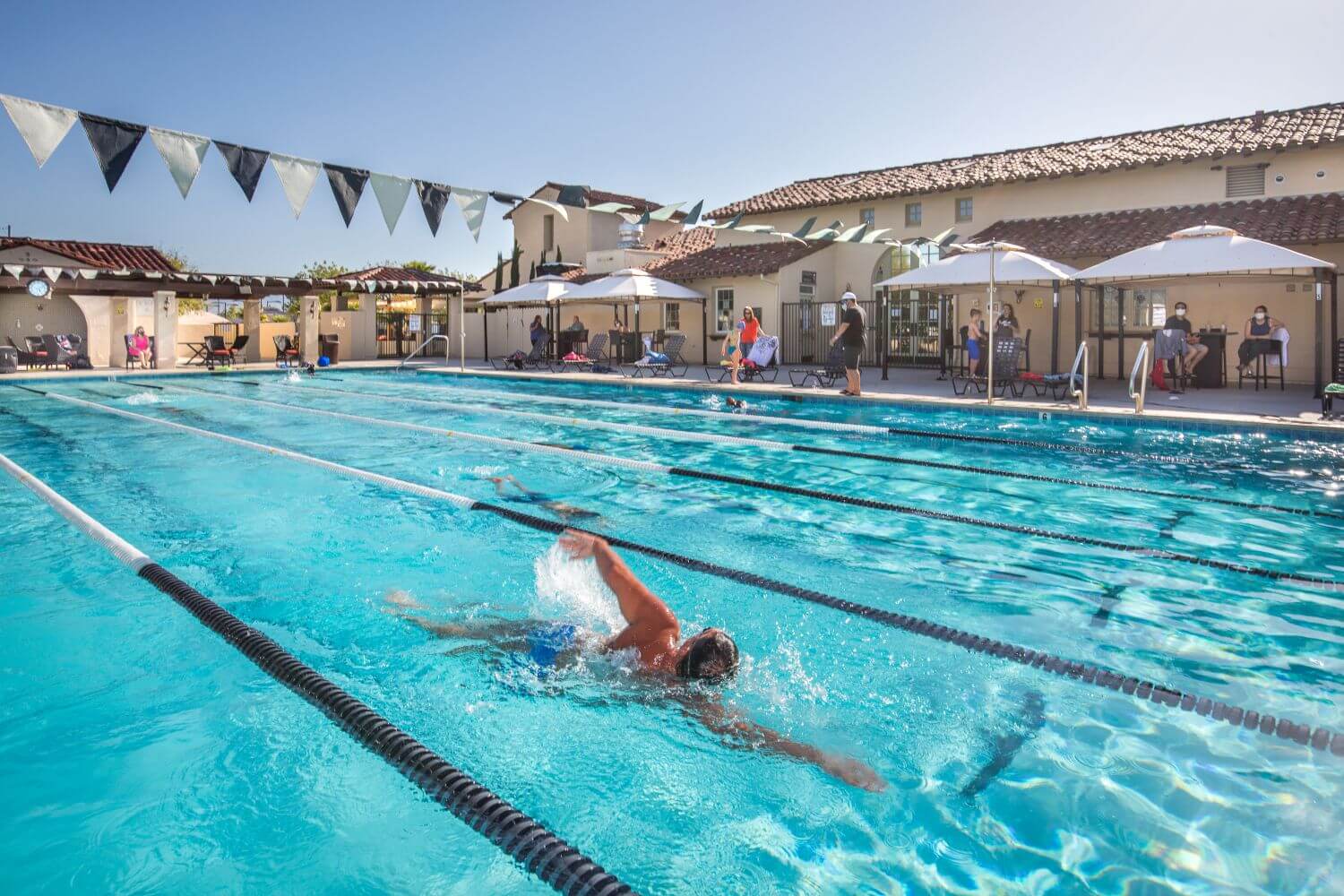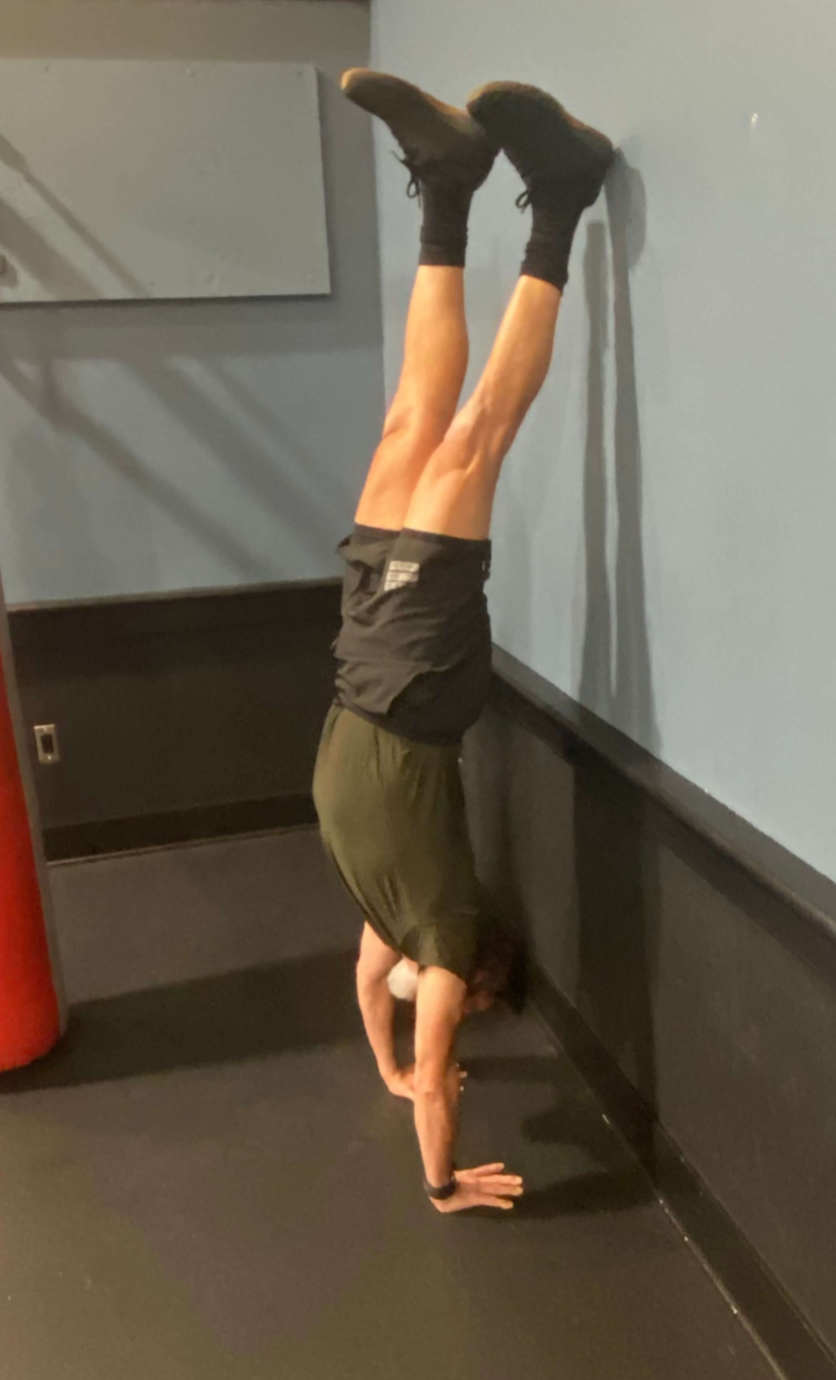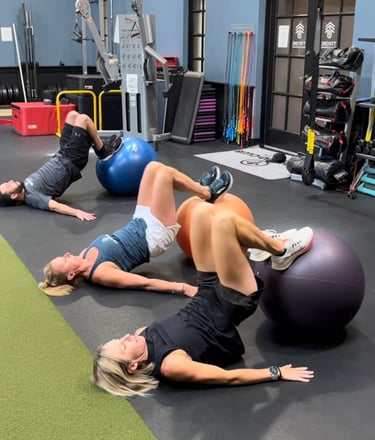The benefits of cross-training (prevent injuries and end monotony)
April 12th, 2023 | 3 min. read
By Jen Azevedo

Injuries from overuse are a chronic bane for athletes of all skill levels. The ankle that never quite recovers before the next basketball game. The tennis elbow that you always feel makes a twinge every time you serve. The runner’s knee that begins to burn as soon as you hit mile three.
These injuries sideline you from play and need regular rehabilitation and sometimes even medical intervention.
If you are tired of feeling the same pain and limitations, then it is time to consider how you can cross-train.
The Paseo Club is a social club in the Santa Clarita Valley. We offer group classes and private lessons to our members in yoga, Pilates, strength training, tennis, and much more.
Members frequently ask our instructors how to minimize or rehab injuries. In this article, you will learn what cross-training is, some examples of cross-training, its benefits, and how to choose the best cross-training workouts for you.
What is cross-training?
Cross-training is the addition of other types of exercise to your main fitness activities.
As a one-sport athlete, cross-training allows your body to work on weak areas and prevent or minimize injuries due to overuse. Cross-training is a tool to help you stay strong, flexible, and healthy and allows your body to work better at the things you enjoy.
Overuse of muscle groups can be detrimental to your success in your sport or physical activity of choice. By supplementing with other movements or forms of exercise, you can allow for more flexibility in muscle groups that can get tight from repetitive movements.
What are examples of cross-training?
Any alternative types of exercise that is different from your main activity and provides benefits to your fitness are considered forms of cross-training.
Some examples of cross-training are:
- Triathletes cross-train with yoga
- Runners cross-train with swimming and Pilates
- Tennis players cross-train with weight training and yoga
- Weight lifters cross-train with Pilates and biking, jogging, or cycling
- Pilates practitioners cross-train with sprints
 The 4 benefits of cross-training
The 4 benefits of cross-training
The benefits of cross-training have been well-researched by professionals. One study after another says the same thing — the benefits of cross-training are measurable to the body and the mind.
1. Strength Symmetry
In sports like tennis and baseball, the dominant side of the body gets a very different amount of force and strain added to it than the non-dominant side.
By choosing cross-training activities that focus on symmetry in the body, you help to create an overall better balance.
2. Fights off overuse injuries
Most sports tend to rely on certain areas of the body more. Cyclists and runners work their legs. Tennis players tax their shoulders, elbows, and knees. People who lift weights struggle with mobility often.
Selecting activities that strengthen other areas and focus on lengthening and bringing suppleness to the body ends the over-taxation of the same joints and muscle groups. Cross-training gives tired muscles a chance to recover and underused muscles to strengthen.
 3. Keeping it exciting (aka end boredom)
3. Keeping it exciting (aka end boredom)
Ever get to the point where the goal seems so far away that the activity you love starts to get boring? Cross-training prevents burnout.
If you swim consistently and find that the black line at the bottom of the pool is not fun to watch anymore, it might be time to head into the gym for a different workout and a different outlook. A change of pace can help you enjoy hopping back into the pool the next day!
4. Improves performance
Research shows that doing your favorite sport over and over does not alone improve your abilities. Soccer players do HIIT. Football players do ballet. Yogis strength train.
By crossing over to a different sport, you exercise new areas of your body that challenge you in exciting ways. This approach results in better performance in your primary physical activity.
 How do you decide what type of cross-training activity to choose?
How do you decide what type of cross-training activity to choose?
Think about the potential for injury in the things you like to do.
Are those injuries common because of…
- an imbalance of strength?
- overuse of certain parts of the body?
- an abundance of force to one spot?
Find an alternative activity that combats those issues, and work to become proficient in it.
Instead of jumping from activity to activity, which can cause its own injuries without proper attention to form or stability, choose a couple of things to focus on that will help your original sport without causing further harm.
Final thoughts on cross-training
Although learning a new sport or fitness method as an adult can initially feel awkward or intimidating, it only benefits your body and mind.
Athletes of any age can implement cross-training — teens through seniors. But cross-training is especially important for endurance athletes, people with a history of injuries, and older adults.
The purpose of fitness is to be active for as much of our lives as possible. To keep our bodies injury-free, mobile, and energized, cross-train with a complementary activity.
The Paseo Club offers over 60 fitness classes each week, from Zumba to Pilates and LIFT to HIIT. There are over 21 tennis and pickleball courts and a junior Olympic pool.
If you are interested in becoming a member of the Paseo Club, schedule a tour of the club today.
In the meantime, check out these three articles.
- The best fitness and mobility program for tennis players
- Benefits of doing yoga as you age (and where to do yoga in the Santa Clarita Valley)
- The 9 benefits of personal training (and how it helps you to achieve your fitness goals)
Jen Azevedo is a tennis professional, pickleball professional, personal trainer, group exercise instructor, and the general manager of the Paseo Club. She loves the community at the Paseo Club and that it is also a safe and fun place for her daughter. Jen’s favorite activities are joining her tribe for trail races or her partners for tennis matches. Occasionally Jen slows down to relax with a book — she reads over 100 a year!
Topics:

